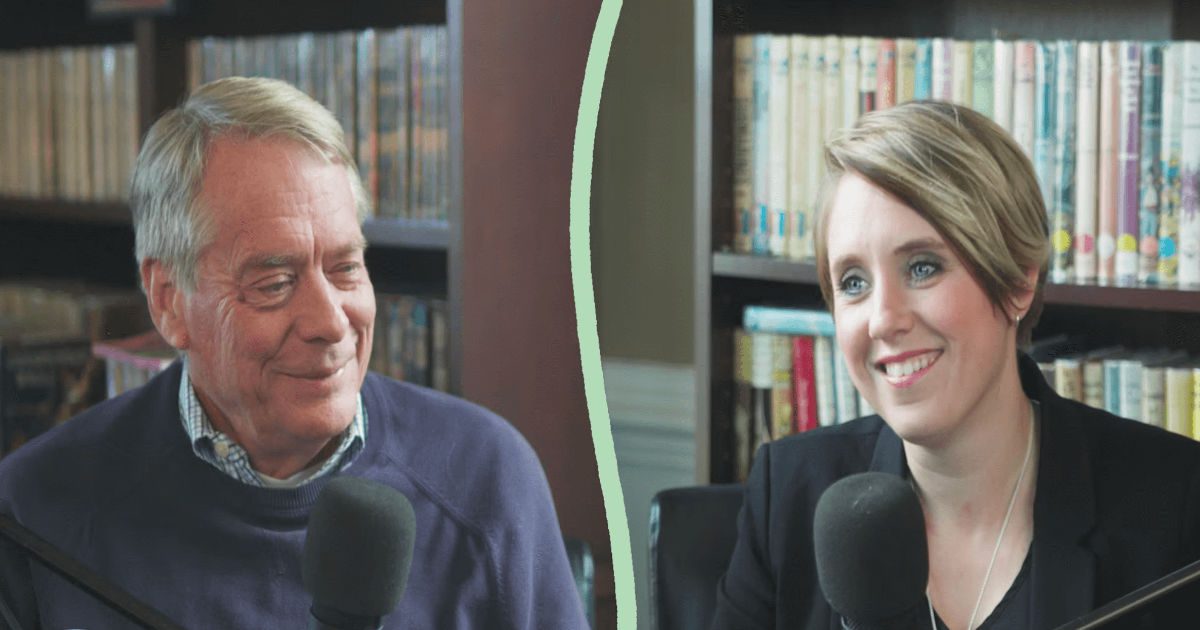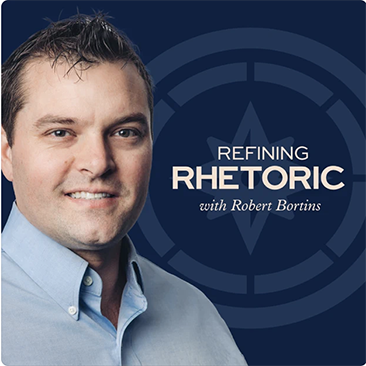By Jonathan Bartlett
Originally published in the Classical Conversations blog.
“The fear of the LORD is the beginning of wisdom: and the knowledge of the holy is understanding.” Proverbs 9:10 KJV
The question of how science relates to faith is one that seems to baffle many people, but this need not be so. This is a foundational issue, because the approach that a person has to this question will also influence how they think of faith in a wide variety of situations. Most people take one of three main approaches to the relationship of science and faith.
Approach 1: Science and Faith Cover Different Topics
One approach that is popular among theologians is to separate science and faith with a great wall preventing any entanglements between the two. This view was popularized by Steven Jay Gould, who used the acronym NOMA, which stands for “non-overlapping magisteria,” to describe it. In this view, science and faith cannot conflict, because they cover two different subjects, which do not overlap at any point. Science covers the objective, evidence-based principles and facts, and faith covers value-oriented ideas and ultimate meanings. This is also often called the fact/value split.
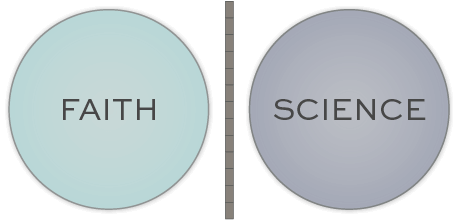
This view is endorsed by a wide variety of organizations, including the National Academy of Sciences and the American Association for the Advancement of Science. The stated goal of this approach is to clearly demarcate the lines between faith and science so that neither one crosses into the other. It also takes into account the differences in methodology, and assumed differences in content. For instance, science, in large part, uses the inductive method for determining truth, while faith is about trust and hope. Philosophers have long pointed out that science is unable to deal with questions of value and morality on its own, so NOMA simply implements the converse as well—if science cannot reach morality, then neither will faith be allowed to reach facts.
Of course, in reality, this split really does not work. Christianity does make claims that relate to the natural world. God has revealed Himself in history, and this has affected nature and history. Therefore, evidence, facts, science, and faith all come together. In addition, scientists are always trying to expand the scope of what science covers—and they should do this.
Therefore, at least in theory, NOMA blunts both science and faith. However, in practice, most people who claim NOMA actually mean “science deals with whatever it wants to, faith deals with whatever science hasn’t gotten to yet”. For instance, the concept of “free will” would seem to be a question of faith, and yet the National Academy of Sciences, which openly subscribes to NOMA, has published supposedly scientific papers that deal with the question of free will.
The NOMA position even finds its way into many church denominations. While most do not have official positions supporting NOMA, one usually finds very few voices within the church willing to present any explicitly Christian view of science, or any science topic, except for Christ’s resurrection. Instead, the furthest they are willing to go is to express disapproval when scientists attempt to derive ultimate meaning from their theories and observations.
Approach 2: Science and Faith in Conflict
Another approach to science and faith is the “conflict” or “warfare” idea. In this view, science and faith are essentially contradictory ways of viewing the world. A scientific view of the world necessarily puts a person in conflict with religious modes of thinking, and a person of faith necessarily takes a negative view of science and scientific methodology. In this approach, any overlap between positions of science and faith are taken to be purely coincidental.
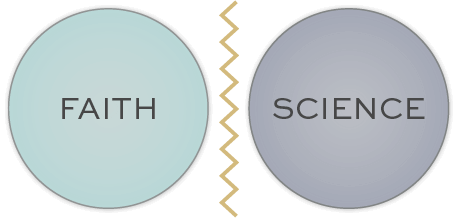
This approach takes science and faith to be two full, mutually incompatible worldviews. That is, any given question can be answered in a scientific framework, just as it can be answered in a religious framework. Therefore, science and faith “compete” for the answers to each of life’s questions. Note how different this is than NOMA. Under NOMA, science and faith are both given limits to the scope of inquiry. In the “conflict” idea, science and faith are not limited in scope, but form two mutually incompatible ways of addressing the same question.
The interesting thing about the “conflict” idea is that it is usually only held to by atheists and agnostics—it is almost never held to by Christians. It is usually held to by people who have expanded science into a religious position itself. Christians always have room for science, but atheistic materialists (people who think that the physical world is all there is) must expand science to fill their own religious needs. Unfortunately, popular news coverage nearly always assumes the “conflict” approach, and does not realize that Christians don’t find a necessary conflict between the two.
If this approach is so one-sided and non-sensical, why does it keep coming up? The fact is, in nearly every aspect of life, there are tensions between ideas. There are tensions between ideas in various disciplines, or even within a single discipline. None of these tensions means that there is a necessary conflict between two positions—this is simply the natural result of having incomplete knowledge. As long as our knowledge is partial and imperfect, there will always be tensions among the various ideas we hold onto.
This makes it easy for detractors of Christianity to paint faith positions as being anti-science. One needs only to find an issue, no matter how marginal (or tenuous), which may be in conflict with some person’s faith position, and then proclaim, “See—faith and science are irreconcilable!” In addition, in fact, most of these are based more on interpretation of the evidence than anything else.
Approach 3: Faith Seeking Understanding
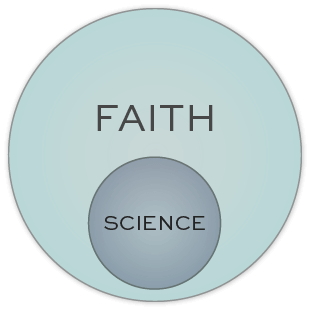
The best approach I have found for integrating science and faith is the “faith seeking understanding” approach. In this model, faith is the total worldview, and science operates as one of many approaches for finding truth within that worldview. As Christians, we find truth in many places. We turn to history to find the truths of the past. We turn to science to find the truths of nature. We turn to philosophy to find the nature of reason. First and foremost, we turn to the Bible to find the truths that govern the other truths. In such an approach, science is certainly one of the means that we use to find truth.
However, science plays a subservient role—it is a discipline whose results are to be judged and weighed by people of faith, it is not the judge over faith.
It is interesting that the coherence of science itself relies on this model. Science itself relies on, but does not provide, a way to test for truth. While science demands that theories correspond with the preponderance of physical data, there are usually many theories, which have the same or similar correspondence. This comes as a surprise to many—most people assume that there is always only one theory, which is valid for a given set of data. The fact is, in many cases, the test for scientific truth is an aesthetic one. Scientists opt for theories, which are simple, elegant, and concise—in other words, beautiful theories. The only valid justification for this is that we expect this because of the nature of God that faith reveals.
This also means that, as Christians, when we participate in science, we should bring the expectations of Christianity with us. For instance, in my own research, I use as a starting assumption the idea that the genome is a designed system. Using that understanding, I have a better appreciation for what is happening within the genome. Since I believe that it is designed, I can reasonably compare it to other designed systems and make inferences and predictions based on those comparisons.
Teaching Our Children about Science
So how does this help us teach our children about science? We must teach our children, in every subject, to think about how various ideas make sense (or do not) within the context of Christianity. When we find ideas that do not make sense, we should ask ourselves—is this because of a lack of knowledge or a wrong interpretation of the evidence? If our goal is to bring every thought to the obedience of Christ, this must include science.
This does not mean that we should ignore subjects, which we have trouble integrating with our faith. Though future posts will cover this issue in more detail, we simply should attempt to understand such subjects thoroughly, teach ourselves to scrutinize the subjects well, and hold each idea to account under Christ.
You can see this “faith seeking understanding” approach reflected in the curriculum at Classical Conversations. Phil Johnson’s book, Defeating Darwinism by Opening Minds, used in the Challenge B curriculum, is one of the best introductory books not just on creation and evolution, but on the whole notion of academic study in any discipline from a theistic viewpoint. Likewise, the Apologia science curriculum used throughout the Challenge program also points in the same direction.
Check out Classical Converations® blogs and Homeschool Freedom Action Center blogs.



